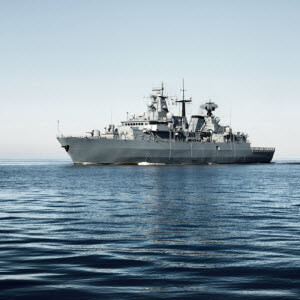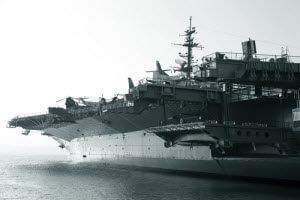HASC Authorizes $20.6 Billion in Navy Shipbuilding Program
In April 2016, USNI News reported that the House Armed Services Committee has approved $20.6 billion in spending for the US Navy Shipbuilding program in 2017. This is a $2.3 billion increase from President Obama’s proposed budget.
According to a statement from HASC Seapower and Projection Forces Subcommittee Chairman Rep. Randy Forbes, it’s “the highest level of shipbuilding funding since the Reagan-Lehman era, adjusting for inflation.”
Below is what the new, more substantial budget will provide.
Incremental Funding for Three Ships
 The Navy will receive $433 billion to finish paying for an Arleigh Burke-class guided missile destroyer (DDG-51) that was partially funded in 2016. It’s planned to introduce the Navy’s first Flight III DDG-51 and will include new technologies as well as the new Air and Missile Defense Radar. This will optimize the ship’s ability to locate air and surface targets and ballistic missile threats.
The Navy will receive $433 billion to finish paying for an Arleigh Burke-class guided missile destroyer (DDG-51) that was partially funded in 2016. It’s planned to introduce the Navy’s first Flight III DDG-51 and will include new technologies as well as the new Air and Missile Defense Radar. This will optimize the ship’s ability to locate air and surface targets and ballistic missile threats.
About $856 million is designated to accelerate the LX(R) program by helping to build the first of 11 amphibious ships for the Navy. This was originally slated to begin in 2020 but could be bumped to 2019 with extra funding provided in the budget. If the ship can’t be built that fast, the money will be used to buy a 13th San Antonio-class amphibious transport dock.
Lastly, $385 million of spending will be used to buy a third Littoral Combat Ship (LCS). It was initially planned to be purchased in 2017 but was taken out of the budget in December 2015 when Defense Secretary Ash Carter cut the LCS/frigate program. The new LCS will add the ship ahead of the expected one-ship buy in 2018. It will also provide each yard with two more ships to ensure stability ahead of the frigate transition.
An HASC staffer stated that the committee is still for the original program size of 52 ships. They also mention that the committee will continue to push for more small surface combatants to meet global combatant commander needs.
Naval Research
 The approved HASC budget for 2017 will also invest money in naval research for high-end weapons. It will fund the development of the MQ-XX Stingray (previously known as the Carrier-Based Aerial Refueling System).
The approved HASC budget for 2017 will also invest money in naval research for high-end weapons. It will fund the development of the MQ-XX Stingray (previously known as the Carrier-Based Aerial Refueling System).
According the USNI’s report, the committee would like to see strike capabilities incorporated into the carrier-based platform, but there’s no confirmation of its official capabilities as of yet.
The bill will invest in next-generation munitions as well, according to Forbes’ statement. Some of these may include Standard Missile-6 and Long Range Anti-Ship Missile.
About $20 million has also been authorized to support Office of Naval Research’s SwampWorks program to boost prototyping and experimentation efforts of technologies and concepts.
Capability and Capacity for the Navy
The new Navy budget, while substantial, does come at a price. As stated previously, the HASC denied many of the Navy’s efforts to cut costs. They rejected their requests to put seven cruisers into an inactive status while waiting for upgrades and maintenance. On top of that, their request to deactivate the Carrier Air Wing Fourteen was denied.
However, Forbes stated that even with these rejections, the bill tries to fund both capacity and capability. Plus it could help to set the Navy and the country for success in the future.
In his statement, he said, “With this legislation, we are rejecting further budget cuts, bending the curve lines, and making a down payment on the 350-ship Navy we need for national defense.”
CPV Manufacturing proudly serves the shipbuilding industry with valves and fittings that ensure safety during travel. Since the 1950s, CPV has equipped US Navy vessels with our high quality valves and fittings. If you would like to learn more, contact CPV Manufacturing today.
